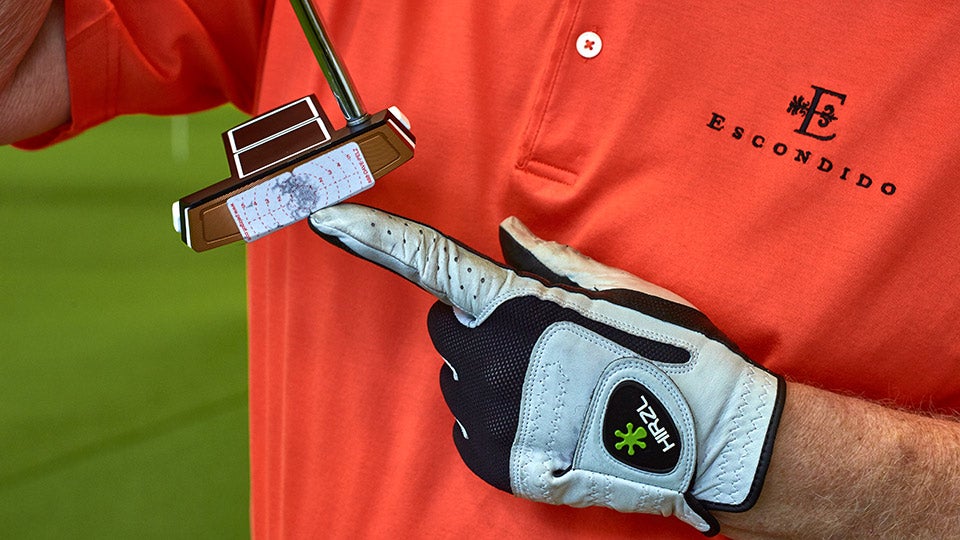Hitting putts isn’t difficult: Just swing a very short club with minimal speed a few feet back and through, in the process barely taxing the bigger muscles in your torso and legs. But holing putts? That’s difficult. Shifting variables make it a vexing endeavor. Even if your stroke is mechanically sound and your confidence is high, you still have to deal with slope, ever-changing green speeds, grain, wind and choosing the correct aiming point.
Cracking this code is the tricky part to putting, and you won’t find the answers by simply rolling putts, no matter how much time you spend on the practice green. You need to train your mind as much as your muscles, if not more. The goal? Fine-tune your feel so you can predict the roll of every putt, then match your stroke to what you see (i.e., where you aim, how far you take the putter back, how much force you apply to the ball).
Yes, feel can be taught. To start, try adding some feedback to your practice sessions. It’s easy. Apply impact tape (available at any golf shop) to your putter face, then challenge yourself with the following drills. And don’t peek at the impact tape until you’ve finished.
Drill 1: Putt two balls from 30, 20 and 10 feet, for six putts total. Your goal is to roll each ball into a three-foot circle around the hole (what I call the “Safety Zone”). When youre done, roll six more putts from the same distances, but from the opposite side of the hole.
Drill 2: Arrange 12 balls in a three-foot circle around the cup on a sloping section of the green. Putt each ball, moving counterclockwise around the circle (clockwise if you’re a lefty) so that the next ball doesn’t interfere with your stance.
Now check the impact tape. You’ll probably see marks all over the face. That’s fine—you have to start somewhere. As you keep at the drills, your impact pattern will eventually shrink to a small area around the sweet spot. (Trust me: It will happen.) These drills can’t help but improve your feel and contact, because they’re designed to sync what your body is doing to what your mind is calculating. Before long, you’ll have solved the trickiest part of putting. You’ll roll purer putts—and make them in droves.







